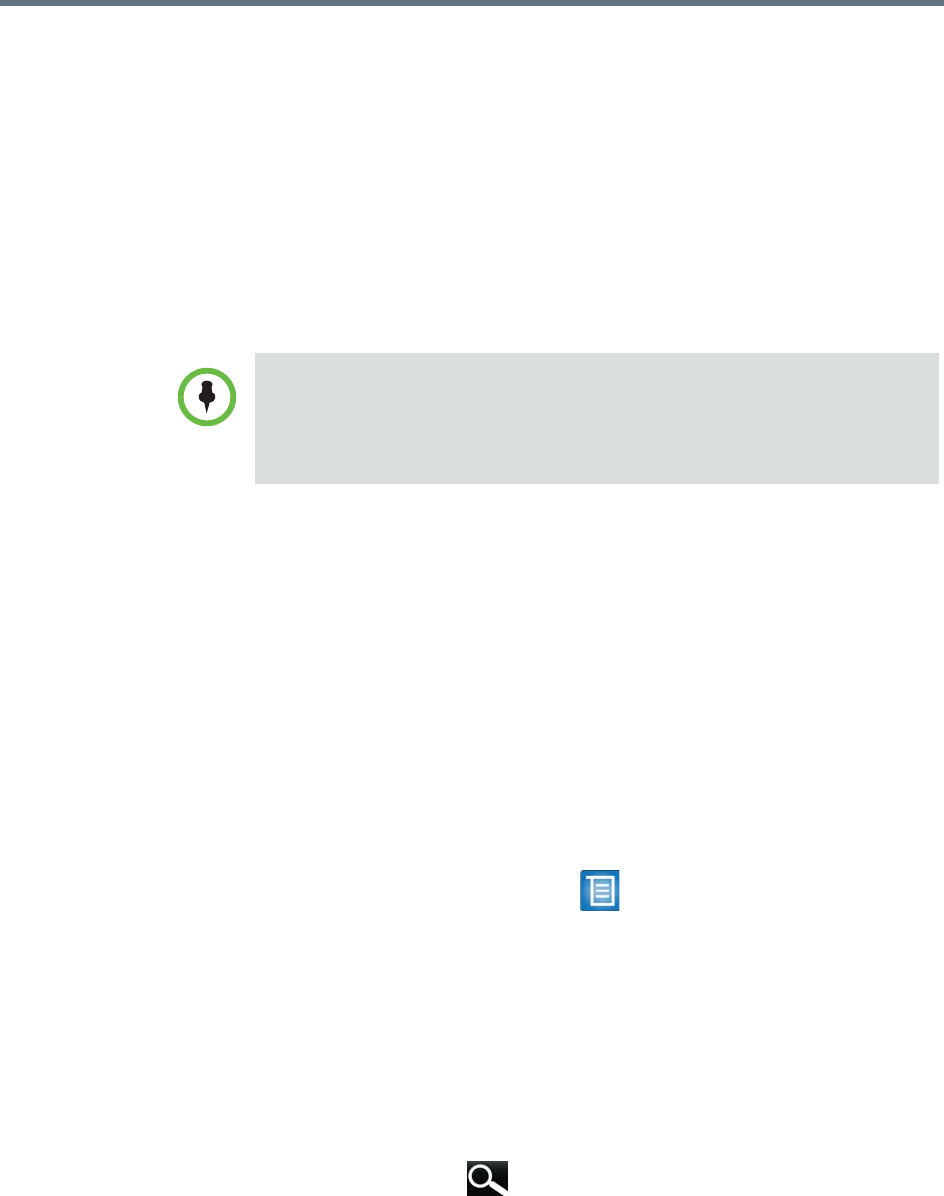
User’s Guide for the Polycom RealPresence Group Series
20 Polycom, Inc.
Working with Directory and Contact Entries
The directory on your RealPresence Group system stores dialing information
that helps you make calls quickly and easily. When a site listed in the directory
calls your system, the system displays the name on the screen when the call
comes in. If a site that calls you is not listed in the directory, you may be
prompted to save the contact information in the directory when the call ends.
If your system is registered with a Global Directory Server, you can see
information about other active sites that are registered with the same Global
Directory Server. These entries are stored on the Global Directory Server, and
you cannot edit them.
Sites that you have added are stored on your RealPresence Group system as
Contacts. Everyone at your site who uses the system can use the contact entries
to place calls. Users at other sites cannot access the contacts on your system.
Polycom RealPresence Group systems support up to 2,000 contacts. They can
also support the following:
• An unlimited number of contacts when the RealPresence Group system is
registered with Microsoft Office Communications Server 2007 or
Microsoft Lync Server 2010
• Up to 200 additional contacts with presence when registered with a
Polycom Converged Management Application™ (CMA
®
) system
Searching for Directory Contacts
1 With your remote control, select > Place a Call > Contacts.
All displays all directory entries. You can scroll through the list of contacts
on the system screen with your remote control.
2 To narrow your search results, select Search to search for an entry in the
directory.
3 To enter a name in the search field:
— Enter the name using the onscreen keyboard.
— Use the text-entry method commonly used with cell phones to select
letters directly on your remote control.
— To search, click on the onscreen keyboard.
For information about using a Microsoft Office Communications Server or
Microsoft® Lync™ Server 2010 directory or managing Microsoft Office
Communications Server or Microsoft Lync contacts, refer to Managing Contacts
Using Microsoft Office Communications Server 2007 R2 or Microsoft Lync
Server 2010 on page 28.
